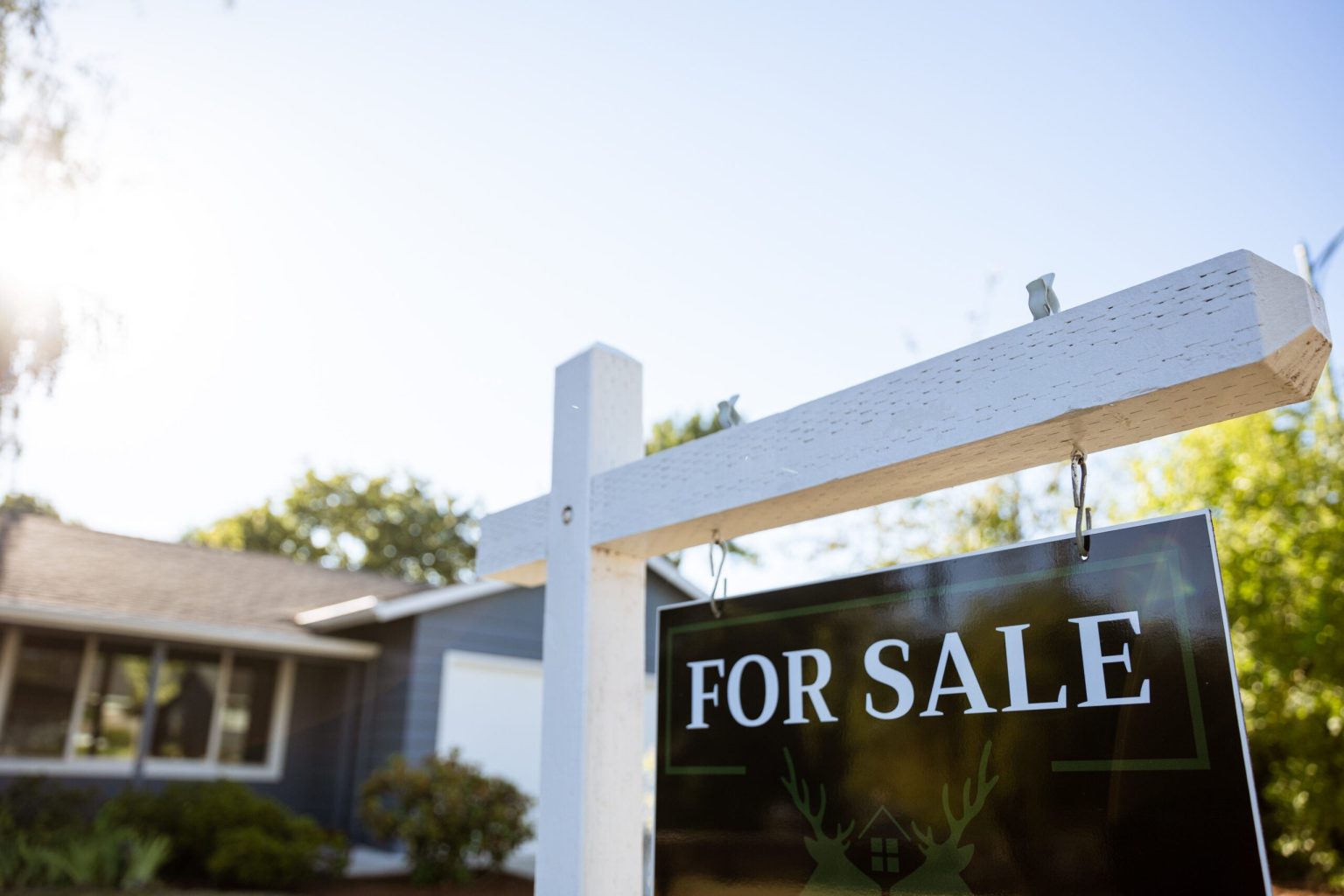The median age of first-time homebuyers has risen to 40 — the highest it has ever been, according to new data from the National Association of Realtors.
It’s not as though first-time homebuyers needed any more bad news, but that’s what they got with this dreary statistic, which tops last year’s previous all-time high of 38. It’s yet another indication of the intensity of the ongoing housing affordability squeeze.
NAR also reports that first-time buyers made up just 21% of all homebuyers this year, down from last year’s then-record low of 24%.
The historically low share of first-time buyers underscores the real-world consequences of a housing market starved for affordable inventory.
— Jessica Lautz
Deputy chief economist and vice president of research, NAR
High prices, scarce inventory
High home prices are creating hurdles for would-be homeowners — the median price of existing homes sold in September was $415,200, a record high for the month, NAR says. That’s forcing young adults to wait longer before becoming homebuyers. The record-low share of first-time buyers and the record-high median age features prominently in NAR’s 2025 Profile of Home Buyers and Sellers, released Nov. 4.
Before 2008, the share of first-time buyers hovered around 40%. And as recently as 2010, the typical age of first-time buyers was 30. Today’s buyers are a decade older, which means they’re losing a decade of appreciation.
“If you wait until you’re 40, you’ve missed out on a lot of growth potential,” says Ben Clark, owner of Home Buyer Representation Inc. in Salt Lake City and president of the National Association of Exclusive Buyer Agents.
Many Americans in their 30s feel they have little choice but to postpone a home purchase. Prices have soared amid an ongoing shortage of homes. While inventories have eased in some markets — notably Texas and Florida — entry-level homes remain scarce.
“We have 50 million people in this country who are between 30 and 40 — peak homebuying years. We just have this enormous cohort of people who are looking for housing,” says Michael Fratantoni, chief economist at the Mortgage Bankers Association. “We have been underbuilding, and we have been underbuilding by a lot.”
Since the Great Recession, builders have slowed the pace of housing starts. They’ve also shifted their focus away from starter homes and toward higher-priced, higher-profit new homes.
The lack of entry-level homes is across the board, across the country. That is where the lack of supply is the tightest.
— Michael Fratantoni
Chief economist, Mortgage Bankers Association
Another culprit is the lock-in effect — for homeowners with 3% mortgage rates, moving would mean having to give up their historically cheap deals.
‘We’ve been saving for a hot minute’
Buying a home isn’t just about affordability. Your lifestyle and future plans also play an important role. You shouldn’t buy a house unless you plan to stay for at least three years. A shorter holding period means your expenses — that is, real estate commissions and closing costs — could outstrip any appreciation.
Jarvis Steele, an attorney in Spartanburg, S.C., grasps this reality: He works remotely for an Atlanta law firm. While that arrangement is stable for now, it could change. “At any moment, they can say, ‘Hey, we’d like you to move to Atlanta,’” Steele says. “As an early-career professional, I like the opportunity to be able to explore an area without being tied down.”
Steele lives with his wife and their 10-month-old daughter in a four-bedroom rental home owned by Quinn Residences, a developer of new rental homes. That company’s business model is based on the needs of tenants like Steele — they’ve graduated from apartment life but aren’t quite ready to buy.
“Homeownership is definitely in my future, but the cards have to align a little bit better,” Steele says.
But there are some young adults who are bursting through the barriers. Felipe and Emma Noriega, ages 28 and 27, in October paid about $800,000 for a new home in South Jordan, Utah. The couple says homeownership was an important goal for them, and they didn’t want to wait. “We’ve been saving for a hot minute,” says Emma.
Trying to buy? Here’s what you can do
Millennials and younger generations value homeownership, but they’re hindered by affordability challenges. Blame it on the triple whammy of pandemic-elevated home prices, tight inventory in entry-level markets and mortgage rates that are well above pandemic levels. Here are six dos and don’ts for coping with a tough market:
- Don’t get overwhelmed by a 20% down payment: While 20% gets you the best deal in terms of a mortgage rate, it’s not mandatory. The Noriegas put down 7% on their Utah home. FHA loans, which are insured by the Federal Housing Administration, let borrowers put down just 3.5% with a credit score of 580 or higher. USDA loans, guaranteed by the U.S. Department of Agriculture, and VA loans, offered by the U.S. Department of Veterans Affairs, require no down payments. Meanwhile, Fannie Mae’s HomeReady mortgages and Freddie Mac’s Home Possible loans allow borrowers who make less than 80% of their neighborhoods’ median income to obtain a conventional loan with just 3% down.
- Don’t overlook down payment assistance: There are many first-time homebuyer and down payment assistance programs. Every state has these programs, and there are 2,200 such initiatives available nationally, says Rob Chrane, CEO of Down Payment Resource. While the typical award is $18,000, some intrepid buyers are amassing $100,000 or more in down payment assistance. However, many buyers and even real estate agents are unaware of these programs. Chrane says that 80% of borrowers using FHA mortgages are eligible, but just 15% receive down payment assistance. Mike Hutchins, president of Freddie Mac, agrees that down payment assistance is too often ignored by buyers. “There’s a myriad of programs that are offered, but they’re underutilized,” he says.
- Don’t get psyched out by the numbers. All the talk about unaffordable housing creates a self-perpetuating doom loop. But don’t give up too easily. “So many people assume they can’t do it,” Clark says. “People see the median price, and they get intimidated — but by definition, half the homes sell for less than that.”
- Do get creative: Many first-time buyers are turning to alternative homebuying strategies such as house-hacking and co-buying. House hacking can mean buying a duplex or triplex, living in one unit and renting out the other(s) to help cover the mortgage. Co-buying refers to purchasing a home with someone who’s not your spouse. Or, accept the reality that a single-family home with a white picket fence might be out of your reach for now, and consider a condo or townhouse as a cheaper option.
- Do find an agent to guide you through the process: The Noriegas credited Clark with coaching them through their first purchase. Jonathan Ballesteros, a 29-year-old tech salesman, likewise said a real estate firm walked him and his fiancé through their $679,000 purchase in Chula Vista, Calif., earlier this year. He used Turbo Homes, a brokerage that charges buyers a flat fee of $7,500. “The only knowledge we had was Google University,” Ballesteros says. “We only had to pay a flat fee, but we got a complete guided process. They held our hand.”
- Do be realistic about what you can afford. Home prices are high enough that first-time buyers might not be able to land their dream houses — the ones with picket fences and the two-car garages — as their first properties. So maybe a fixer-upper or a townhouse makes more sense. Clark used that strategy when he bought his first home in the 1990s — he settled for a house without a garage or central air conditioning. “I adjusted my expectations,” Clark says. “My income was less than the median income, so I bought a house that was less than the median. We built equity there, and we moved up the ladder.”
Why we ask for feedback
Your feedback helps us improve our content and services. It takes less than a minute to
complete.
Your responses are anonymous and will only be used for improving our website.
Help us improve our content
Thank you for your
feedback!
Your input helps us improve our
content and services.
Read the full article here

